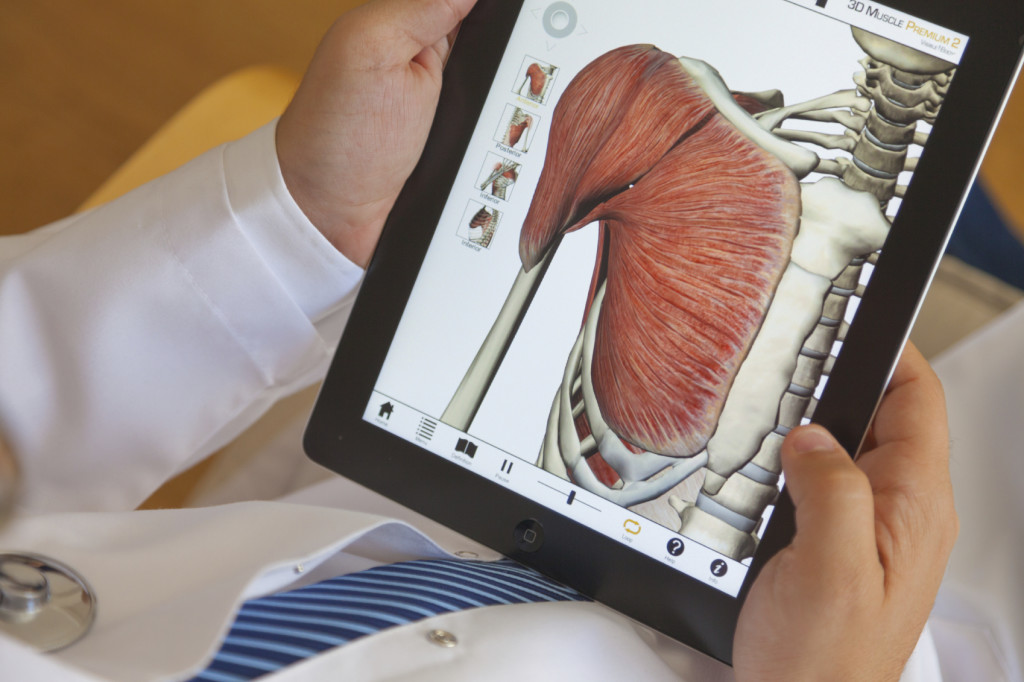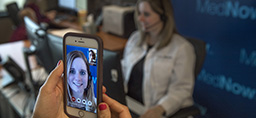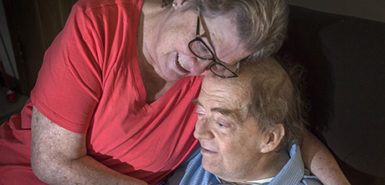
The popularity of tablet computers and smart phones has made it easier for medical professionals–and less painful for patients–to check the progress of wounds that are healing.
Software programs are now used at Spectrum Health Medical Group and other hospitals that can record photographs of a wound without anyone actually touching it.
This is a major benefit for sensitive patients.
In 2014, a Washington, D.C., children’s hospital announced the development of a computer tablet app for taking 3-D images of wounds without having to poke at them. Although a helpful advance in wound care, “This is only one of many (such programs) coming out recently,” said Richard Hodgson, MD, a specialist at Spectrum Health in internal medicine and wound care.
A similar process has been in place for years at Spectrum Health.
“We take pictures with our iPads, and the pictures go right into a patient’s (electronic) record,” Dr. Hodgson noted.
Spectrum Health was one of the pioneers to use photographs as a way of monitoring a deep cut or wound as it heals, he said. In the early days of this practice, staff members used a Polaroid camera to make a photo of a wound, which was then placed by hand into a patient’s file folder. The Polaroids were replaced with digital cameras as prices came down and precision increased.
But now it’s even simpler.
Dr. Hodgson said his colleagues and staff members use the camera on an iPad to photograph the wound on a patient and immediately store the photos electronically.
“You used to have to spend thousands of dollars” to get the resolution now offered on any good phone or tablet camera, he said, noting that some patients can use their own cell phones to track their healing process.
This technology has several advantages.
First, after an initial examination and treatment, a patient’s injury can be checked by medical personnel without anyone poking or prodding it–which, let’s face it, can hurt.
Second, the photo programs themselves are more precise than having a medical staffer measure the dimensions of a wound with a plain old ruler. That’s because injuries are usually not shaped like a square or a rectangle or a perfect circle. They have jagged edges, with some parts of the injury shallower than others.
Electronically stored digital photos “do have a great deal of merit because you can be more precise in your measurements,” Dr. Hodgson said. “This standardizes how wounds are measured by doing it the same way every time.”
And of course, it’s more efficient. If a tablet or smartphone’s software is connected to a hospital’s computer system, you’re skipping some steps, he said, by not having to type the wound’s measurements into a computer.
The portability of the technology is another advantage. A nurse or medical technician can be miles away from the doctor–for example, at a clinic or nursing home–and accurately transmit injury images to a central hospital file without having to send the patient to a hospital.
The National Institutes of Health has reported that more than 6.5 million Americans need advanced wound care every year, at a cost of more than $25 billion. These figures are expected to get larger as the population increases, and also gets older.
And the increase in Americans with diabetes has also resulted in more frequent injuries requiring followup medical care. Dr. Hodgson explained that this is because a high number of diabetes patients have nerve damage.
For example, “they won’t feel their feet very well,” Dr. Hodgson explained. He recalled the example of one of his patients, a construction worker with diabetes, who got a nail in his boot on the job. Because of reduced sensations in his foot, he didn’t notice the injury until he got home and trailed blood from his boot across the kitchen floor.
Varying blood sugar levels can also affect the body’s ability to recover from a chronic wound–another reason for diabetes patients to get careful oversight of an injury.
And then there are the youngest healers–children.
They’re taught to avoid strangers, Dr. Hodgson pointed out. A child with a bad cut or injury may be already fearful.
“Put a stranger in a white coat near them, and they’ll really get upset,” he said. So, for medical professionals to be able to examine how a child’s injury is healing, without actually touching it, can reduce the stress of followup visits to the doctor.
What’s next in this field?
Dr. Hodgson said he’d like to see the continued development of 3-D cameras and software for measuring wounds.
“More and more companies are pursuing this,” he noted. Continued advances in this technology will mean even more precision and convenience–and less pain.
 /a>
/a>
 /a>
/a>
 /a>
/a>